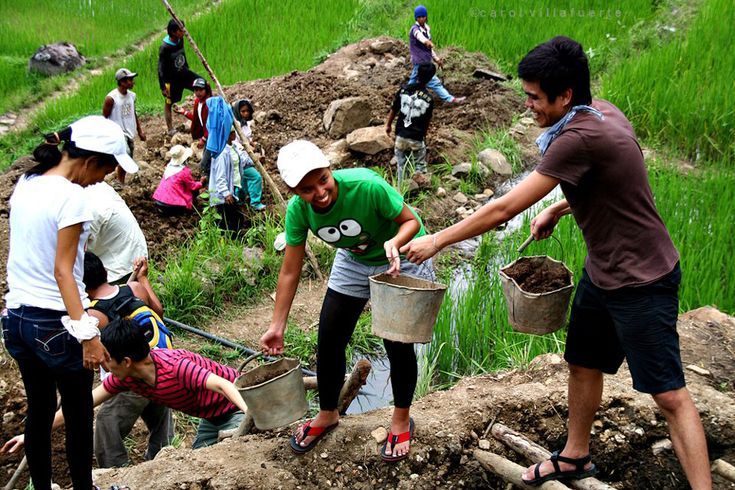Why Volunteerism Is Failing in Modern Communities

Introduction: When Goodwill Wears Out
Once seen as the heart of community resilience and mutual support, volunteerism is quietly dying in many parts of the world. From empty church sign-up sheets to NGOs begging for local participation, the traditional spirit of giving one’s time and effort for free seems to be fading.
In African and global communities alike, where communal labor once defined our values, volunteerism is no longer sustainable—and in some cases, no longer respected. What happened to the shared belief that we can build a better world together, one unpaid effort at a time?
This article explores why volunteerism is collapsing under the weight of economic, social, and structural realities—and what must change if it is to be revived.
.jpeg)
image credit: pinterest
1. The Cost of Living Crisis Has Redefined Generosity
In today’s world, time is expensive. With inflation rising, unemployment looming, and wages stagnating, people are struggling to meet their own basic needs. The idea of sacrificing time to do unpaid work—even for a noble cause—feels like a luxury few can afford.
Especially in African countries where informal economies dominate, people rely on every hour of the day to hustle, trade, or seek income. Volunteering becomes seen as impractical, even foolish, when there's no food on the table.
“People can’t afford to work for free when they’re barely surviving,” says Amina, a youth organizer in Kenya. “They need stipends, not stickers.”
2. Burnout From Exploitation in the Name of 'Passion'
Modern organizations—NGOs, churches, even community initiatives—have often weaponized passion to extract unpaid labor. People are told: “Do it for the love,” or “It’s not about money,” while working long hours under pressure.
This is especially true for young people, who are told volunteering will boost their CVs or “open doors.” Yet many find that their labor is not valued, not credited, and not compensated, and worse still—those “doors” never open.
The result? Disillusionment, resentment, and an understandable reluctance to ever volunteer again.
3. Lack of Structure and Accountability in Volunteer Programs
One reason volunteerism flourished in the past was because it was structured—whether through neighborhood associations, religious bodies, or school-led initiatives. Today, many volunteer efforts lack clear direction or fail to deliver impact. People show up, are underutilized, or feel like their time was wasted.
Worse still, corruption and nepotism within some non-profits and local organizations further discourage sincere participation. Volunteers witness mismanagement of funds, tokenism, or leaders taking credit for their work. Without transparency or appreciation, volunteerism loses both meaning and dignity.
4. The Rise of Performative Volunteering
In the digital age, even volunteerism has been turned into a performance. People now volunteer to look good on social media. Events are organized less for impact and more for optics. The result is short-termism—people show up once for a photo, then disappear.
This Instagram-fication of service has made it harder to cultivate genuine, long-term commitment. When visibility becomes the main motivation, the community is no longer the focus—clout is.
Volunteering becomes less about “What can I do to help?” and more about “What can I gain from being seen helping?”
5. Changing Definitions of Community

image credit: pinterest
Volunteerism relies on the idea of belonging—a shared sense of responsibility toward one another. But in many modern societies, community ties have weakened. Urbanization, migration, and digital isolation have eroded neighborly bonds. People don’t know their neighbors, don’t trust local leadership, and don’t feel obligated to help “strangers.”
Especially among the younger generation, community is often virtual, not physical. People may be active in online support groups, fandoms, or remote networks—but feel no connection to their street, village, or town. This disconnect makes local volunteerism feel irrelevant or outdated.
6. Lack of Incentives and Career Pathways
Let’s face it—altruism alone isn’t enough anymore. People want to see how their time contributes to growth, opportunity, or recognition. Yet many volunteer programs offer no clear feedback, skill-building, or mentorship.
In developed countries, some volunteerism is tied to career pipelines, where volunteers eventually earn jobs or credits. In contrast, in parts of Africa and the Global South, volunteering often leads to dead ends. Youth spend years “volunteering” without pay, only to be passed over for formal jobs or replaced by donors’ favorites.
The absence of structured pathways has made volunteerism feel like an exploitative loop, not a stepping stone.
7. The Pandemic Effect
COVID-19 exposed the fragility of community support systems. While mutual aid efforts initially surged, the long-term effect was burnout. Volunteers were expected to do everything—deliver food, check on neighbors, help with online schooling—often with little protection or resources.
In many cases, governments and NGOs quietly offloaded responsibilities onto volunteers while cutting budgets and services. This left many feeling used and unsupported.
The post-pandemic world now bears that scar: a population too tired, too wary, and too untrusting to continue unpaid work that felt like substitution, not support.
8. The NGO-Industrial Complex
In many African communities, volunteerism has been co-opted by donor-driven agendas. Local initiatives are often shaped to fit external funding requirements rather than real community needs. Volunteers are asked to execute projects they didn’t design, for outcomes they don’t believe in.
This disconnect leads to apathy and fatigue. Why volunteer if you’re just a pawn in someone else’s development game?
Moreover, the glaring inequality—where foreign experts are paid large sums while locals work for free—undermines morale and reinforces power imbalances.
9. Volunteerism Doesn’t Always Feel Safe
In areas affected by conflict, political unrest, or high crime, volunteering can be physically dangerous. Youth leaders, journalists, or community workers often face threats, arrests, or harassment simply for organizing cleanups, protests, or health drives.
Where governments are suspicious of community organizing, volunteerism becomes a risky activity, especially when tied to activism, education, or rights.
So, Where Do We Go From Here?
Volunteerism isn’t dying because people are selfish. It’s dying because the world has made it too hard to sustain. Still, this doesn’t mean we should abandon it. Instead, we need to rethink and reframe what it means to serve others in today’s world.
Here are some ideas for revival:
1. Redefine Volunteerism With Incentives
Offer more than “experience.” Provide transport stipends, data reimbursement, or food. Respect people’s time and sacrifice. Even token compensation can show appreciation and build sustainability.
2. Build Community First, Projects Later
Instead of designing projects and seeking people to join, nurture relationships first. Let the community identify its own needs. People are more likely to volunteer when they feel heard, valued, and connected.
3. Make Volunteerism Skill-Based
Match volunteers to tasks based on their skills and interests. Offer certificates, recommendation letters, or mentorship as part of the process. Let volunteering build careers, not block them.
4. Embrace Micro-Volunteering
Not everyone can commit hours weekly. Introduce short, flexible volunteering models—1-hour sessions, remote tasks, or one-time events—that respect people’s schedules and still make an impact.
5. Restore Trust Through Transparency
Be open about how funds are used, who makes decisions, and how volunteers are treated. Trust is the currency of volunteerism. Without it, people won’t return.
Conclusion: From Exhaustion to Empowerment
Volunteerism can no longer survive on goodwill alone. If communities are to thrive, we must move from expecting unpaid sacrifice to building systems that honor it. That means reimagining service as something dignified, mutual, and meaningful—not exploitative.
In every village, suburb, or city center, there are still people willing to serve. But they must be treated not as free labor, but as partners in progress.
If we want volunteerism to live again, we must give it breath, structure, and value. Not slogans.
You may also like...
Arsenal Legend Thierry Henry to Receive Prestigious BBC Lifetime Achievement Award

Former Arsenal and France football legend Thierry Henry will be honored with the Lifetime Achievement award at the 2025 ...
Maresca's Emotional Rollercoaster: Chelsea Boss Claims 'Happy' After 'Worst 48 Hours'

Chelsea boss Enzo Maresca has clarified his previous 'worst 48 hours' comments, now expressing happiness and a deeper co...
Fallout Season 2 Shatters Records, Outperforming HBO's Last of Us!

Fallout Season 2 has premiered on Prime Video to overwhelmingly positive critical and audience reception, scoring a near...
Winter Is Back! Kit Harington Hints at Massive Game of Thrones Comeback

Kit Harington has definitively shut down any possibility of reprising his role as Jon Snow, stating he doesn't want to g...
Love Blossoms: Anwuli & Kennedy's Instagram Romance Leads to #HappilyEverOffor!

Anwuli and Kennedy's love story, sparked by an Instagram connection, led to a beautiful Igbo traditional wedding. After ...
Teyana Taylor & Lucien Laviscount Light Up the 'Spirit Tunnel' with Epic Dance Moves!

The Jennifer Hudson Show features high-energy 'Spirit Tunnel' entrances, with Lucien Laviscount making a stylish walk an...
Kenya's Billion-Shilling Travel Bill: Austerity Pledge Broken?

The Kenyan government spent nearly Sh5 billion on travel in the first three months of FY 2025/26, raising concerns about...
Shehu Sani Urges Nigerians: Shun US Travel Ban, Build Nation

The United States has enacted new travel restrictions impacting Nigerian nationals, covering both immigrant and several ...


